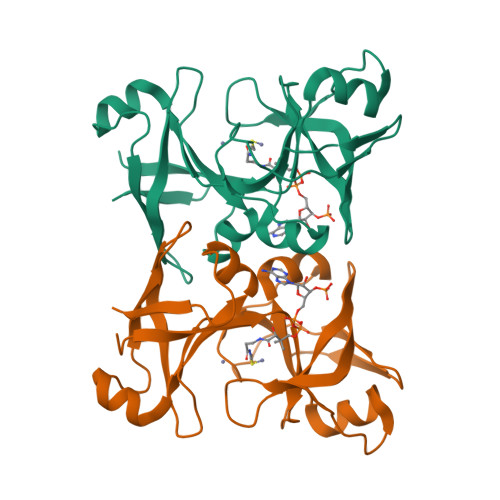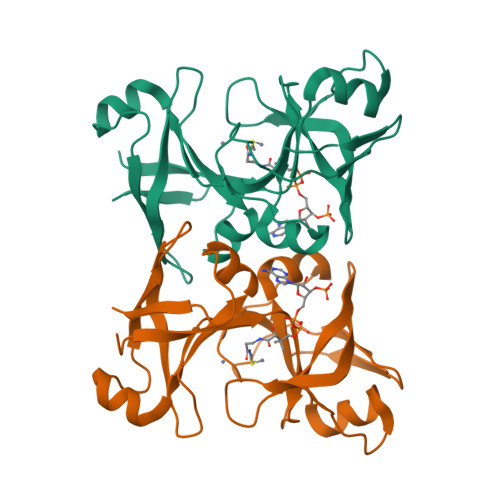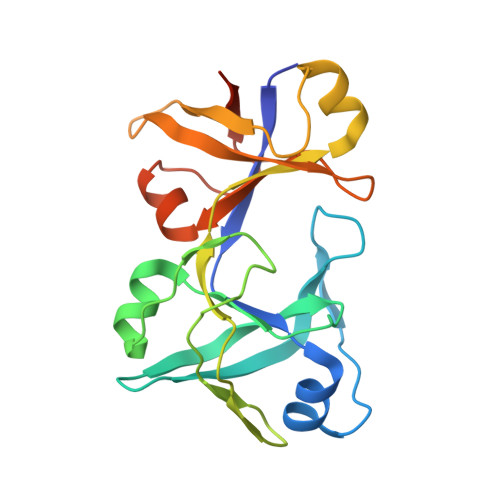The Structural Basis of Coenzyme A Recycling in a Bacterial Organelle.
Erbilgin, O., Sutter, M., Kerfeld, C.A.(2016) PLoS Biol 14: e1002399-e1002399
- PubMed: 26959993
- DOI: https://doi.org/10.1371/journal.pbio.1002399
- Primary Citation of Related Structures:
5CUO, 5CUP - PubMed Abstract:
Bacterial Microcompartments (BMCs) are proteinaceous organelles that encapsulate critical segments of autotrophic and heterotrophic metabolic pathways; they are functionally diverse and are found across 23 different phyla. The majority of catabolic BMCs (metabolosomes) compartmentalize a common core of enzymes to metabolize compounds via a toxic and/or volatile aldehyde intermediate. The core enzyme phosphotransacylase (PTAC) recycles Coenzyme A and generates an acyl phosphate that can serve as an energy source. The PTAC predominantly associated with metabolosomes (PduL) has no sequence homology to the PTAC ubiquitous among fermentative bacteria (Pta). Here, we report two high-resolution PduL crystal structures with bound substrates. The PduL fold is unrelated to that of Pta; it contains a dimetal active site involved in a catalytic mechanism distinct from that of the housekeeping PTAC. Accordingly, PduL and Pta exemplify functional, but not structural, convergent evolution. The PduL structure, in the context of the catalytic core, completes our understanding of the structural basis of cofactor recycling in the metabolosome lumen.
Organizational Affiliation:
Department of Plant and Microbial Biology, University of California, Berkeley, Berkeley, California, United States of America.




















